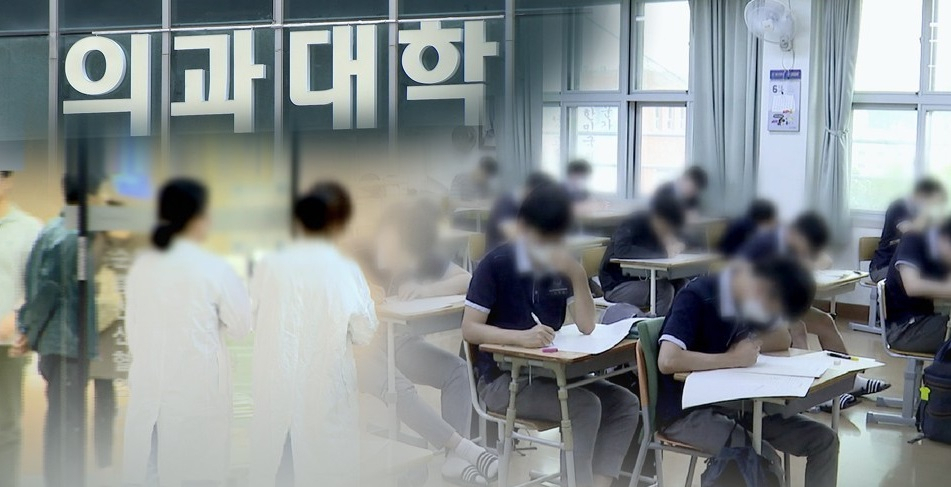
A look at the recent-year admissions data of Korean medical schools has revealed two disturbing trends: Applicants try year after year to get into the program and those who succeed are mostly from Seoul and major cities.
Three out of 4 students admitted into medical schools across the country in the past four years had taken entrance exams multiple times before they succeeded, an analysis by the office of Democratic Party of Korea Rep. Kang Deuk-gu of 5,144 students enrolled showed.
Repeat takers of Suneung, or the annual college scholastic ability test, took 3,984 slots in the admissions, taking up 77.5 percent of the pie.
Of the repeaters, 2,171 were those who took the exam twice. They took up the largest share of the total new enrollees at 42.2 percent. Three-timers accounted for 21.8 percent, followed by 13.4 percent who sat the exam four or more times.
Those who got admitted into med school on their first try, during senior year in high school, took up only 21.3 percent. There were 1,096 such students.
The data only looked at the “regular” admission process that takes place around November each year, which is one of the two main pathways for college admissions in Korea. Over half of the slots in medical schools in Korea are allotted to the other admission pathway which starts early, usually from around early summer.
In Korea, medical schools are primarily undergraduate programs that offer a six-year curriculum, although the number of graduate programs has been growing in recent years.
Rep. Kang said the prevalence of repeat test takers reflects a pervasive obsession with medical professions among elite students in Korea, where doctors are widely regarded as having one of the highest paying jobs.
The lawmaker also pointed to another disturbing trend found in the admissions data: a big discrepancy in regional representation.
Of the enrollees, 36.7 percent hailed from Seoul, while 19.1 percent were from the surrounding Gyeonggi Province. Seoul and Gyeonggi together form the greater capital area.
Students from North Jeolla Province accounted for 7.3 percent. Those from the southern port city of Busan and the southeastern city of Daegu, came at 7 percent and 6.9 percent, respectively. None from North Chungcheong Province had gotten in through regular admissions.
“Most successful applicants are from major cities with highly competitive private academies or areas where elite high schools are located,” Rep. Kang said in a press release.
He went onto to call for systematic measures to resolve the situation where “Korea’s smartest and the brightest only seek to enter med schools.”





